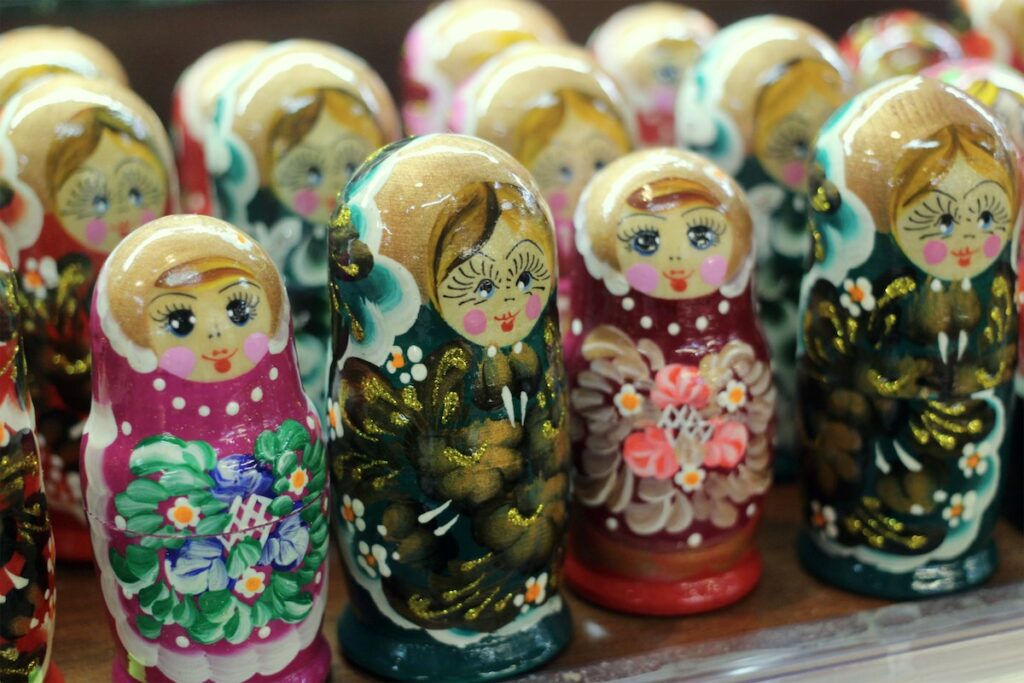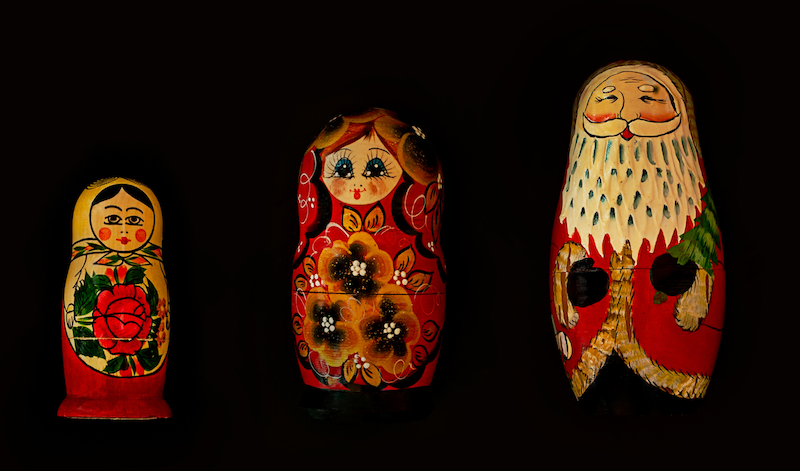Kirov Style
Matryoshka is made from linden and birch, which is cut when it is filled with sap in the spring, peeled and aired. Each doll shape is created on a lathe. Kirovskaya matryoskha is based on the style of Vyatka matryoskha. Most of the dolls are gold in color and have only females as figurines.
Semionovo Style
Wooden painted tableware, wooden toys and matryoskha dolls are well-known items of Semionovo. Russian nesting dolls made in Semionovo were much more decorative and representative than Sergiev Posad’s matryoshka. Semionovo painters would use aniline paint and leave a lot of unpainted areas. In the past, brush marks were lightly woven into the contours of the face and color was applied to the cheeks. It was quite famous for having a large number of pieces together. The largest was to have 72 small babies and was a meter long.

Vyatka Style
Vyatka-style painters have a long woodworking that includes decorative work they do in log houses and making toys, spoons and utensils. Russian dolls depicted a blue-eyed girl from Northern Russia with a gentle shy smile. Masters made not only aniline dyes, but inlaid with straw. The mesh is cut into many small pieces of various shapes and then glue is applied on top to create an intricate pattern. Then the straw is covered with oily polish.
Sergiev Posad Style
It is traditional nesting doll with flower design as theme. The shape is such that the upper part flows into a thicker lower part. The doll was made with heated poker and facial features, the costume details were burned wood. The doll was exhibited in the first Russian and foreign toy museum, as well as in the first exhibition of the matryoskha.
Polkhovsky Maidan Style
Artists of Polkhovsky Maidan also use aniline paints. Nesting dolls are painted brightly before being covered with varnish. Colors and decorations are more important than the colors of Semionovo and Sergiev Posad style. The richness in colors is due to the super imposing technique of applying one layer of paint over another. The bright floral pattern on the apron was a dog rose with many leaves. This flower has always been considered a symbol of femininity, love and motherhood.
